Mâs Monumental
| Capacity | 85 018 |
|---|---|
| Country | Argentina |
| City | Buenos Aires |
| Clubs | CA River Plate |
| Other names | Estadio Monumental (1938–1986), Estadio Monumental Antonio Vespucio Liberti (1986–2022) |
| Inauguration | 25/05/1938 (River Plate – Club Atlético Peñarol 3–1) |
| Construction | 1936–1938 |
| Renovations | 1958, 1977, 2020–2024 |
| Design | José Aslan, Héctor Ezcurra |
| Address | Avenida Presidente Figueroa Alcorta 7597, Buenos Aires (CABA), C1428 |
Advertisement
Mâs Monumental – stadium description
What is Estadio Monumental like in a nutshell?
Estadio Monumental (commercially Mâs Monumental), as the name suggests, is characterized by its large size. It is not only the largest stadium in Argentina, but – after a recent expansion – in all of South America.
The stadium belongs to River Plate, the club with the most championships won in Argentina and one of the largest in the world in terms of membership. During River Plate matches, the venue regularly fills up with fans who create a heated atmosphere. The famous derby with Boca Juniors (the so-called Superclásico) in particular attracts huge attention.
The facility, although oval in shape, is football-specific: the older rings of the stands are complemented by the newest lower sectors, which were built right next to the field. The stadium is located in the northern part of Buenos Aires, near the banks of the Río de la Plata and the international airport (hence the frequent sight of planes flying nearby).
The stadium was inaugurated in May 1938, initially without the north stand. The lower tier of the missing stand was built in 1958 thanks to money from the sale of the team's top scorer to Juventus, and the upper tier was built before the 1978 World Cup. Between 2020 and 2024, the athletics track was removed and replaced by additional lower level of the stands.
The Argentine national team regularly plays here, and in addition the stadium has hosted numerous international competitions, such as Copa América and the first Pan-American Games in 1951. The biggest event, however, was the 1978 World Cup, when in the final played at the Estadio Monumental, the Albicelestes defeated the Netherlands 3–1 and claimed their first ever World Cup triumph.
In 2030, the stadium will once again be a World Cup venue, although only one match will be played there, at the start of the tournament.
Estadio Monumental is usually the first choice of the biggest music stars who come to Argentina, so the stadium also hosts big concerts very often.
How was Estadio Monumental created?
Where did River Plate originate from?
Club Atlético River Plate was founded in 1901 and was initially associated mainly with the La Boca neighborhood in the southern coastal area of Buenos Aires. The same neighborhood, by the way, is where River Plate's later arch-rival, Boca Juniors, was founded in 1905 and still has its facility there today (the famous La Bombonera). In the early years, the two clubs frequently changed their fields, which were sometimes located very close to each other.
River Plate's last facility in the La Boca neighborhood was built in 1915 and was located adjacent to the port (Dársena Sur), between Aristóbulo del Valle, Pedro de Mendoza, Pinzón and Gaboto streets.
When did River Plate move to the northern part of Buenos Aires?
The rather modest size of the stadium in Dársena Sur, as well as fears that the port expansion would soon force the club to move out anyway, prompted River Plate to decide in 1922 to move elsewhere. A new plot of land was found north of the city center.
The land was leased from the British railroad company Ferrocarril Buenos Aires al Pacífico, and the new stadium took its name from the streets where it was built (Estadio de Alvear y Tagle). The facility opened on May 20, 1923, and with stands capable of holding at least 40,000 spectators, it was River Plate's first truly large stadium.
When were plans to build Estadio Monumental conceived?
With growing popularity and membership, along with the first major successes, and the fact that the club did not own the land on which the stadium was located (the lease was expiring in 1937), River Plate executives began to consider building another, even larger facility in a new location. Much of the credit for the creation of the new arena went to Antonio Vespucio Liberti, who first took over as president of River Plate in 1933.
The club obtained a government loan for the construction of the new stadium through Banco Hipotecario Nacional. The new facility was to serve River Plate first and foremost, but the huge stadium, the largest in Argentina (hence the name: monumental) was also to be capable of hosting major international events including even the Olympic Games (which is why it was given a running track).
What land was chosen for the Estadio Monumental?
On October 31, 1934, the club acquired nearly 8.5 hectares of land, which was located much farther north of downtown Buenos Aires (about 7 kilometers from the existing facility), on the shore of the Río de la Plata estuary (the shore of the basin was originally right next to the stadium, today the shoreline is moved a little further away).
The plot of land on which the new stadium was to stand was on the site of the former horse racing track (Hipódromo Nacional de Belgrano) – specifically, the site of its northern curve. The track was inaugurated on August 14, 1887, and races were held there until 1911. In the 1920s, the entire infrastructure was demolished and the plot was parceled out.
Interestingly, in 2020, when the pitch was dredged in connection with the reconstruction of the stadium, old horseshoes were dug out of the ground, evidence of the existence of the hippodrome. The find was donated to the River Plate museum. Another remnant of the hippodrome is the street layout of the neighborhood adjacent to the stadium to the south, which follows the footsteps of the former racetrack.
Who designed the Estadio Monumental?
An architectural competition to design the new stadium was also announced in 1934. The authors of the winning proposal were José Aslan and Héctor Ezcurra (collaboration: Fidias Calabria), who modeled their design on the ancient Roman Coliseum, although similarities can also be found in their design to the Estadio Centenario in Montevideo, which opened in 1930.
The plan called for the construction of oval, two-story stands 32 meters high, divided into four sections. The huge size was to make the stadium the largest in Argentina. The athletics track gave the facility a multifunctional character. The main stand was planned on the eastern side, and a tall marathon tower was to stand on top of it.
When was the Estadio Monumental built?
On May 25, 1935, the cornerstone for the new stadium was laid. The date of May 25 is not coincidental, as River Plate was founded on that day, and in addition, Argentina celebrates a national holiday at that time commemorating the end of the May Revolution and the establishment of the first junta in 1810.
However, construction work began more than a year later, on September 27, 1936, and the stadium was built in less than two years, with the inauguration taking place in May 1938. At the time of the opening, work was still underway on a section of the south stand.
Since there were not enough funds for the full project, the facility was initially built without the north stand. The marathon tower was also not built, although its base was constructed on top of the main stand (it was later dismantled during the stadium's modernization before the 1978 World Cup).
When was the Estadio Monumental inaugurated?
On May 22, 1938, the new Estadio Monumental was blessed by Bishop Dionisio Napal. On May 25, 1938, the national holiday and anniversary of the club's founding, there was a presentation of two large flags of Argentina and River Plate.
The grand opening of the facility, however, took place on May 26, 1938, when River Plate, in front of 70,000 spectators, played a match against the friendly Club Atlético Peñarol of Montevideo (3–1).
The first league match at Estadio Monumental was played on May 29, 1938, with the hosts then taking on CA Independiente (2–4).
What changes has Estadio Monumental undergone?
In 1957, River Plate sold its top scorer and later Golden Ball winner, Omar Sívori, to Juventus FC. With the money thus earned, the hitherto missing stand on the northern curve was built in 1958, although at the time only the lower tier was built. After Omar Sívori's death in 2005, the north stand was named after him.
The north stand was completed in 1977, when a second floor was built as part of a modernization before the 1978 World Cup, and with it a huge new scoreboard (later turned into a video screen) was erected. Before the World Cup, new lighting (set on distinctive racks at the top of the stands) was also built, as well as a sizable amount of seating.
In 2014, a new video screen was installed measuring about 20 × 7 meters (the largest in South America). In 2024, the video screen was replaced with an even larger one (28.8 × 12.6 m).
When did the last reconstruction of Estadio Monumental take place?
The beginning of the second decade of the 21st century saw ambitious visions for the stadium's redevelopment, involving the elimination of the athletics track and the roofing of the stands: in 2010 a concept was created by Plarq Arquitetura, in 2011 the “River Plate Forum” vision was presented, and in 2013 a design by Lier & Tonconogy Arquitectos.
The work was carried out between 2020 and 2024 (full completion was in early 2025), although a more modest variant was eventually decided upon, with no roof over the stands and other ambitious ideas. The reconstruction consisted of eliminating the athletics track, lowering the field's slab by 1.8 meters and creating new spectator areas in the lower part.
The gaps between the stands that existed in the corners were also eliminated, and new dark-gray seats were installed, while increasing the ratio of seats to standing places. With the reconstruction, the stadium became a football-specific facility, and its capacity increased to 85,018 spectators, making it the largest in South America.
The reconstruction project and a report on the construction work carried out at Estadio Monumental between 2020 and 2024 can be seen on separate subpages
When was the parking lot next to Estadio Monumental and the River Plate museum built?
In the early 2000s, a two-level parking lot was built southeast of the stadium. A club museum building was also added to the parking lot, and was inaugurated on November 9, 2009. Between 2022 and 2024, the parking lot was expanded to five levels, and a footbridge was built to connect it to the stadium, as well as a decorative façade.
What events does Estadio Monumental host?
Who hosts the Estadio Monumental?
The stadium is hosted and owned by the River Plate (the popular “Los Millonarios”), which regularly plays its matches there. Although it was already a well-known team, after the opening of the Estadio Monumental the club established a leading position in the country with, among other things, a record number of championship titles, and today only Boca Juniors can match it in this regard.
The club also has a track record of success in international competitions, including triumphs in the prestigious Copa Libertadores. In addition, River Plate ranks among the largest clubs in the world in terms of membership.
River Plate has a devoted fan base that eagerly attends their team's matches, and there is always a warm atmosphere in the stadium. In 2023, after reaching a capacity of more than 84,500 spectators (the largest stadium on the continent) due to the expansion of the stadium, the club sold out tickets for all 48 home games in the season, achieving the highest average attendance among football clubs worldwide in that year.
The club has a fierce rivalry with the Boca Juniors. Both clubs hail from the La Boca neighborhood in southern Buenos Aires, but since the 1920s River Plate has been associated with the northern part of the city. Matches between these teams (the two most successful clubs in the domestic competition) rank among the most famous derby in the world and are known as Superclásico.
What international competitions are held at the Estadio Monumental?
Argentine national team
The Estadio Monumental plays an important role for the Argentine national team, which mostly plays its home matches there, including the most important ones.
World Cup 1978
In 1978, the stadium was one of six venues for Argentina's football World Cup. The Estadio Monumental hosted nine matches of the tournament, including the most important of them: the opening game and ceremony, as well as the 3rd place match and the grand final.
In a thrilling final at the Estadio Monumental, the home team, with lively cheering from its own fans and a rain of serpentines and confetti flying from the stands, defeated the Netherlands 3–1 after extra time. For the Albicelestes it was their first ever World Cup triumph.
World Cup 2030
In 2030, Estadio Monumental is to be one of the World Cup venues for the second time, although this time it will no longer play a leading role, as before, but rather a symbolic one: only one match will be played there, right at the beginning of the tournament.
The 2030 World Cup is to be held mainly in Spain, Portugal and Morocco, but in honor of the centennial of the World Cup, a gesture has also been made toward South America (the first World Cup was held in 1930 in Uruguay) and three matches at the beginning of the competition will be played in Uruguay, Argentina and Paraguay, with the Argentina match to be held right on the Estadio Monumental.
Copa América
The stadium has also hosted South American Championship/Copa América matches in 1946, 1959, 1987 and 2011.
International club competitions
The stadium has often had the opportunity to host matches of international club competitions, including South America's most prestigious Copa Libertadores. In international competitions, the stadium is used not only by River Plate, but sometimes by other Argentinian teams as well.
Since the 2019 Copa Libertadores final was introduced in a one-match format at a pre-designated venue (formerly the final was held as a two-match series), Estadio Monumental has so far had the opportunity to host such a game once, on November 30, 2024 (Botafogo – Atlético Mineiro 3–1).
Pan American Games 1951
The first edition of the Pan-American Games was held in Buenos Aires from February 25 to March 9, 1951. Estadio Monumental was one of the most important venues of the event, hosting the athletic competition and the closing ceremony.
What musical events are held at Estadio Monumental?
Due to its size and convenient location in the nation's capital, the Estadio Monumental is usually the first choice of major music stars who come to Argentina to hold a concert. The venue has thus become the leading music venue in the country and has had the opportunity to host an extraordinary number of major concerts featuring world-class stars.
Among those who have performed at the stadium are Sting, Tina Turner, Rod Stewart, David Bowie, Eric Clapton, Prince, Elton John, Guns N' Roses, Michael Jackson, Madonna, Paul McCartney, The Rolling Stones, Phil Collins, Bon Jovi, AC/DC, Enrique Iglesias, U2, Metallica, Backstreet Boys, Red Hot Chili Peppers, Shakira, Robbie Williams, Ricky Martin, Aerosmith, Coldplay, Miley Cyrus, Justin Bieber, Lady Gaga or Taylor Swift.
What does Estadio Monumental look like?
The stadium has an oval shape, and the inspiration for the architects who designed it was the Roman Coliseum. For years, the facility was equipped with an athletics track, which was surrounded by two rings of stands, but during the latest reconstruction (2020–2024) the track was eliminated, and its place was filled by additional lowest audience areas, giving the stadium a football-specific character.
The new lowest audience sections partially connect to the old lower ring, which is divided into a lower (Baja) and upper (Media) section, with private boxes stretching around its perimeter. The lower ring is partially overlapped by a vast upper floor (Alta). The main stand with the presidential box is located on the eastern side.
Currently, most of the stands are equipped with dark gray folding seats, and standing sectors are left only behind the goals. The capacity of the stands is 85,018 spectators, making the stadium the largest in South America. The stands are devoid of a canopy.
Above the upper edge of the stands (except for the curves) stretch the characteristic leaning racks, on which lighting is mounted. Just behind the north stand is a big video screen, which is supported by two large external poles.
In the past, the stands were clearly divided into four parts, but in 2024 the narrow gaps in the corners were filled in with the missing sections of the stands, combining them into a single unit. Each side of the stands has its own name – some have changed over the years, and currently they are: San Martín (main stand, east), Centenario (south), Belgrano (west) and Sívori (north).
Are there sports arenas under the stands of the Estadio Monumental?
There are sports halls under the south stand (Centenario), serving River Plate's basketball and volleyball teams. The main hall, called the microestadio and dedicated mainly to basketball team, has stands for 2,400 spectators.
Does the Estadio Monumental house a university?
Interestingly, River Plate has its own university, the Instituto Universitario River Plate (IURP). Its headquarters is located at Estadio Monumental, under the main stand (San Martín).
What is located in the Estadio Monumental's surroundings?
To the southeast of the stadium is a five-level parking lot (the top level is open air), integrated with the club's museum building. The parking lot is connected to the stadium by an above-ground footbridge.
Also in the immediate vicinity of the stadium are training fields, tennis courts, other small fields, and a swimming pool. Also nearby is the Ciudad Universitaria suburban rail station, which opened on August 29, 2015, and behind it is one of the campuses of the University of Buenos Aires. To the southeast of the stadium is also another smaller university, Universidad Torcuato Di Tella.
The stadium is located in the northern part of Buenos Aires, close to the banks of the Río de la Plata estuary, and relatively close to Jorge Newbery International Airport (hence a common sight at the stadium is planes flying past). The facility belongs to the Belgrano region, although it is often identified with the neighboring Núñez region.
What is the name of the River Plate stadium?
From its inception, the stadium was called Estadio Monumental or simply El Monumental (in reference to its enormous size).
On November 29, 1986, the stadium was named after Antonio Vespucio Liberti (Estadio Monumental Antonio Vespucio Liberti), a former River Plate president who held the position several times between the 1930s and 1960s. He was largely credited with bringing River Plate's current stadium to fruition, although the construction itself took place during the term of another president, José Degrossi.
In April 2022, an agreement was signed to sell the naming rights to the stadium. A supermarket chain became the sponsor, and the facility was renamed Mâs Monumental (a subtle play on words was used, by the way, since after “El Monumental” was changed to “Mâs Monumental,” the stadium instead of “Monumental” is now “More Monumental”).
Is it possible to take a tour of Estadio Monumental?
River Plate offers a guided tour of the stadium. The tour is combined with a visit to the club's museum, located across from the Estadio Monumental. Tours are available daily, as long as they do not interfere with events taking place at the stadium.
Advertisement
Pictures
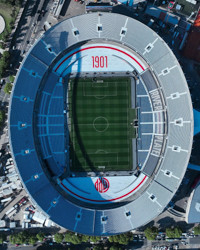
11.2024 © Obras River Plate 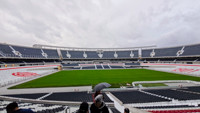
30.05.2024 © Dibumartinez23 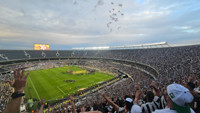
30.11.2024 © Phill ad (CC BY-SA 4.0) 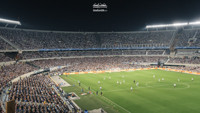
15.10.2024 © Grzegorz Kaliciak 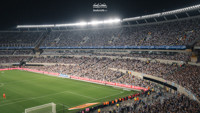
15.10.2024 © Grzegorz Kaliciak 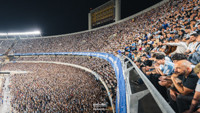
15.10.2024 © Grzegorz Kaliciak 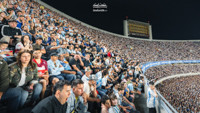
15.10.2024 © Grzegorz Kaliciak 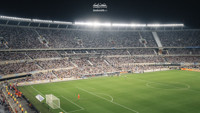
15.10.2024 © Grzegorz Kaliciak 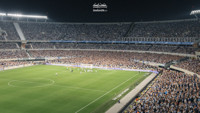
15.10.2024 © Grzegorz Kaliciak 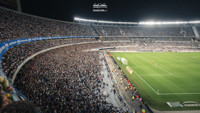
15.10.2024 © Grzegorz Kaliciak 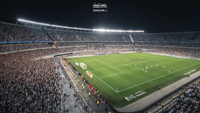
15.10.2024 © Grzegorz Kaliciak 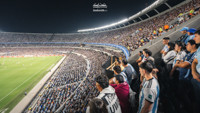
15.10.2024 © Grzegorz Kaliciak 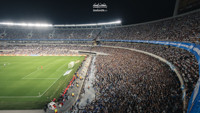
15.10.2024 © Grzegorz Kaliciak 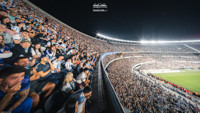
15.10.2024 © Grzegorz Kaliciak 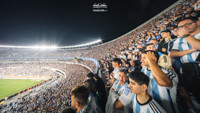
15.10.2024 © Grzegorz Kaliciak 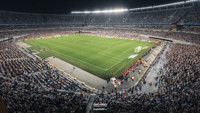
15.10.2024 © Grzegorz Kaliciak 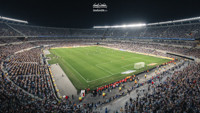
15.10.2024 © Grzegorz Kaliciak 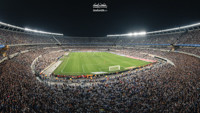
15.10.2024 © Grzegorz Kaliciak 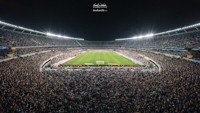
15.10.2024 © Grzegorz Kaliciak 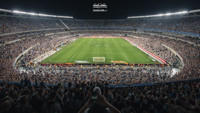
15.10.2024 © Grzegorz Kaliciak 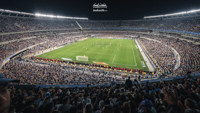
15.10.2024 © Grzegorz Kaliciak 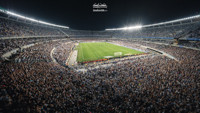
15.10.2024 © Grzegorz Kaliciak 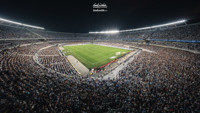
15.10.2024 © Grzegorz Kaliciak 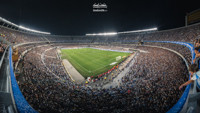
15.10.2024 © Grzegorz Kaliciak 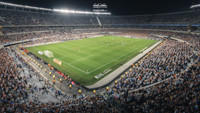
15.10.2024 © Grzegorz Kaliciak 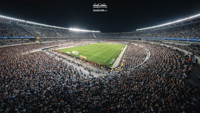
15.10.2024 © Grzegorz Kaliciak 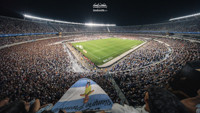
15.10.2024 © Grzegorz Kaliciak 
2020 © instagram: @gui10.road 
2020 © instagram: @gui10.road 
2020 © instagram: @gui10.road 
02.03.2017 © instagram: @drones.arg 
05.11.2017 © instagram: @drones.arg 
05.11.2017 © instagram: @drones.arg 
30.08.2018 © instagram: @drones.arg 
23.08.2019 © instagram: @drones.arg 
02.10.2019 © instagram: @drones.arg 
02.10.2019 © instagram: @drones.arg 
02.10.2019 © instagram: @drones.arg 
03.10.2018 © instagram: @drones.arg 
03.07.2017 © instagram: @drones.arg 
27.06.2011 © Globovisión (cc: by-nc) 
16.11.2010 © Adam Straney (cc: by) 
29.03.2008 © José Luis Merizalde Alcívar (cc: by-nc) 
29.03.2008 © José Luis Merizalde Alcívar (cc: by-nc) 
29.03.2008 © José Luis Merizalde Alcívar (cc: by-nc) 
29.03.2008 © José Luis Merizalde Alcívar (cc: by-nc) 
29.03.2008 © José Luis Merizalde Alcívar (cc: by-nc) 
29.03.2008 © José Luis Merizalde Alcívar (cc: by-nc) 
07.10.2007 © Remi de nimega (cc: by-sa-nc) 
25.10.2009 © Nyall & Maryanne (cc: by-nc) 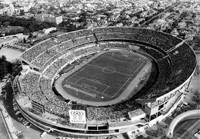
1970 © 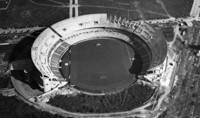
1938 ©
2020:
1978–2020:
1958–1978:
1938–1958:
Related news
2025
-
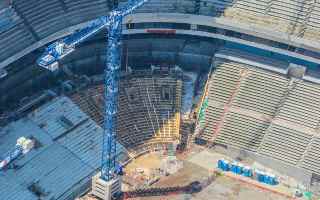
Mexico: Estadio Azteca is racing against time to be ready for World Cup
There are only eight months left until the start of the 2026 World Cup, but the legendary Estadio Azteca is still a construction site, bearing no resemblance to the spectacular visualizations. The complex renovation has accelerated in recent weeks, but time is running out.
-
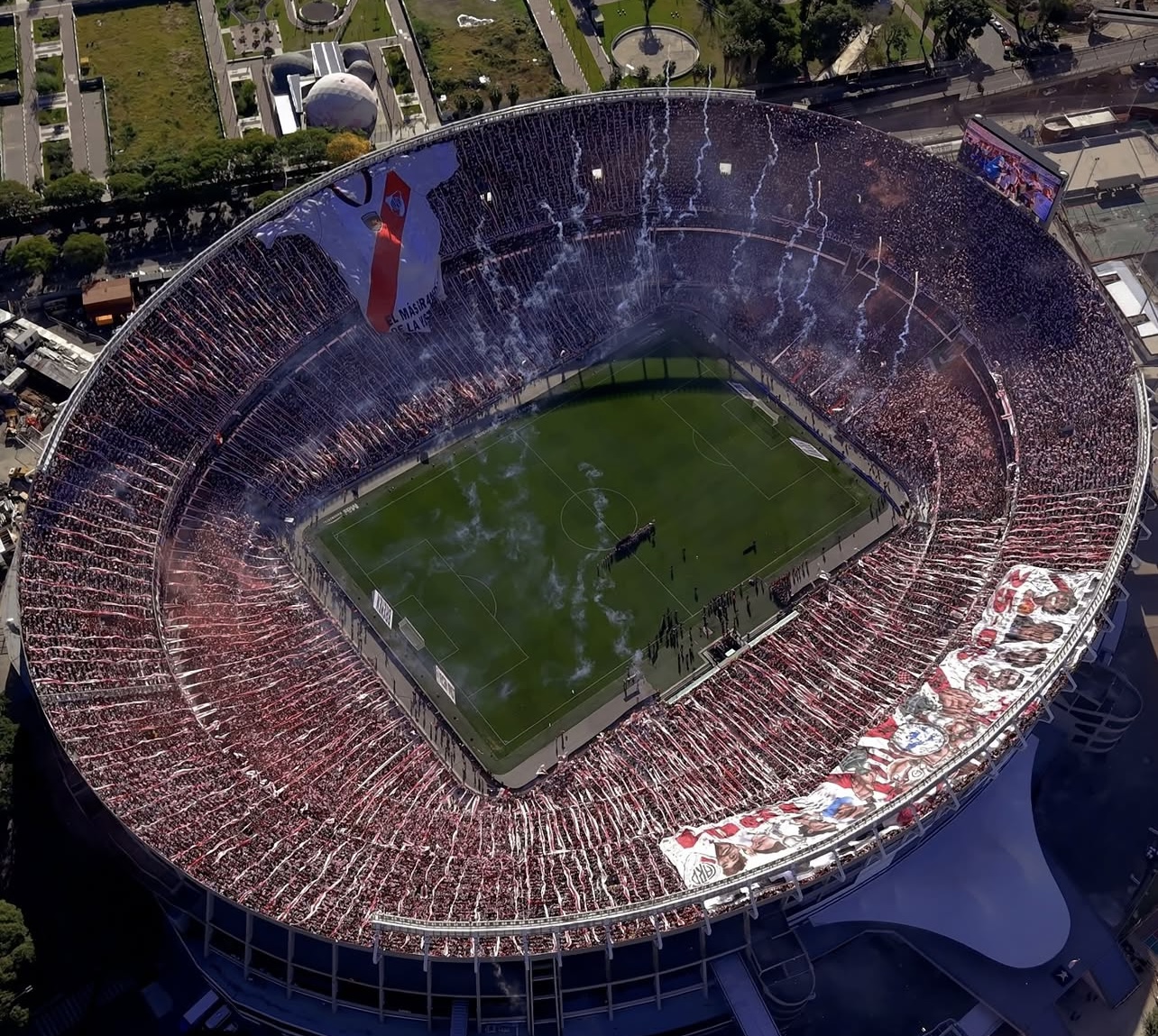
Argentina: Sunday’s Superclásico marked the best attendance in history... or did it?
Tifos, fireworks, flares, flags, strips... El Monumental was dyed in red and white for the 264th River-Boca match, which set a new attendance record in the history of the Superclásicos. However, there is a precedent that casts doubt on this data.
-
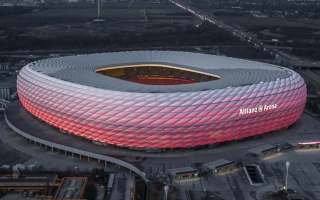
World: Which stadium is the best around the world? The architect responds
Modern stadiums have become much more than just venues for sporting events. They attract tourists, impress with their architecture, and set new standards. But which stadium is considered the best in the world according to renowned architect Nacho Tellado?
-

SOTY: We know the winner of Stadium of the Year
23 stadiums and one intriguing winner. Which one? We’ll announce it on Wednesday—first to our weekly newsletter subscribers and then to the rest of the world. Fans from all continents cast around 10,000 votes. Thank you!
-
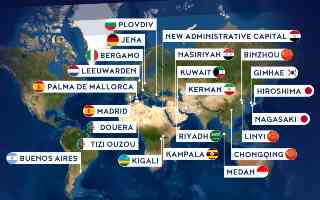
SOTY: Last hours to vote for your Stadium of the Year 2024
Have you chosen your top 5 stadiums opened in 2024? You have until the end of the week to vote in the 15th edition of our annual competition. Bernabéu, Mas Monumental, Stadion Utama Sumatera Utara, or Egypt Stadium? But there are many more nominees—check the full list one more time and make your choice!
-
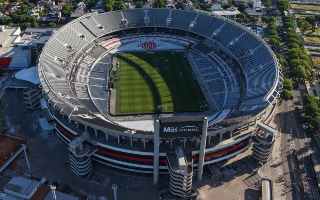
SOTY: Vote for Mas Monumental in the Stadium of the Year competition
Mas Monumental was already huge, and thanks to a recent upgrade, its capacity has increased by tens of thousands—without the structure growing a single inch. The home of River Plate is among the nominees for the Stadium of the Year competition. Only a few days remain to cast your vote!
-
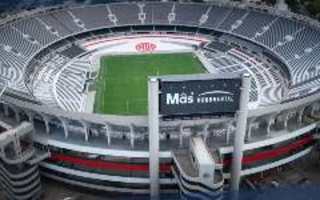
Argentina: Stadium in Buenos Aires, even more monumental
After 4 years, South America's largest stadium is almost complete. Following River Plate's announcement that the promised addition to the stands has already been installed, work is now focusing on finishing the last elements of the facility. The redevelopment gives El Monumental a chance to fight for the title of Stadium of the Year.
-

SOTY: Say hello to your new favorite stadium!
Which one? The choice is yours, and it’s a big one. 23 stadiums are competing in this year’s Stadium of the Year contest. The lineup? Impressive. The competition? Fierce. Cast your vote and share it with your fellow football fans!
-
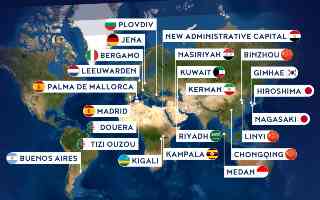
SOTY: Get ready to choose your favorite stadium
On February 3rd at 00:00 CET (Central European Time), the annual Stadium of the Year competition will begin, allowing fans to select the best stadium inaugurated in 2024. This will be the 15th edition of the contest, which we have organized continuously since 2010. This year, the selection features some of the largest stadiums in the world.
-

Stadium of the Year 2024: Play your part in celebrating 22 new stadiums
Exactly that many stadiums were opened in the past year, 2024—unless, of course, we’ve overlooked one. This is your chance to catch us slipping! Check out the list of venues participating in the Stadium of the Year competition and share your own suggestion for a stadium that opened in recent months.
2024
-
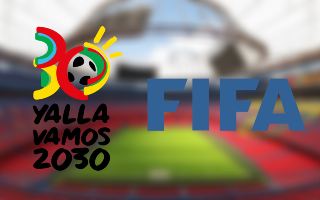
FIFA: World Cup 2030 stadium evaluation. Camp Nou in the lead
Of the 23 stadiums to host the 2030 World Cup matches, as many as 14 either exist only on paper or will undergo deep redevelopment before the tournament. Nevertheless, FIFA has evaluated each of them before the Extraordinary Congress, which will already make its final decision on December 11. Also the one about the final arena.
-
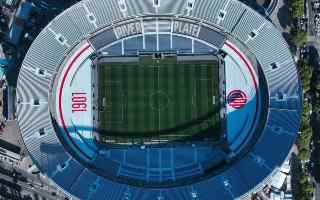
Argentina: Mâs Monumental ready for big final
Just before the Copa Libertadores final, which will take place on November 30 at 21:00 (CET), the completion of the most important stages of Mâs Monumental’s modernization was announced. What surprises will the arena hold during this major match?
-
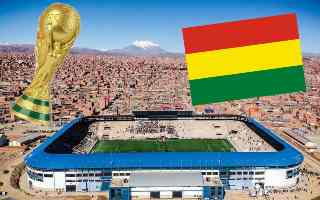
Bolivia: World's highest altitude stadium key to World Cup qualification?
The World Cup qualifiers in the CONMEBOL zone are a competition between 10 national teams. The one that has finished bottom of the competition in recent decades has been Bolivia. However, after moving to a stadium that is one of the highest in the world, results have started to improve.
-
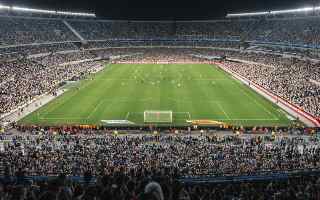
Argentina: Huge screen and connecting stands of Mâs Monumental
River Plate continues to advance its ambitious, comprehensive renovation project for the Mâs Monumental stadium. The club’s secretary general, Stefano Di Carlo, recently provided updates on the ongoing developments.
-

World Cup 2030: The race for the final (and more) enters decisive phase
Recent weeks have been tumultuous for the candidate cities, but the next few weeks will be a real storm. Of the 14 Spanish arenas aspiring to host the World Cup, only 11 will be chosen. Bernabéu, Camp Nou and Grand Stade de Casablanca are vying to host the finals, although the Moroccan megastadion exists only on paper for now.
-

Argentina: What's happening at Mâs Monumental?
Forbes magazine has published a report in which the River Plate stadium is referred to as the "largest in South America." It was also highlighted that Mâs Monumental is one of the club's most lucrative assets, bringing significant benefits. How was this argued?
2023
-

Argentina: Mas Monumental even bigger and bigger...
Work continues at Argentina's largest stadium, which keeps expanding its capacity. What has been happening at Mas Monumental recently and how many fans were able to enter its stands in the last match?
-

Argentina: Mâs Monumental is officially the biggest stadium in South America
River Plate has returned to its arena after redevelopment. The capacity of the stadium has increased to over 83,000, with the venue eventually set to hold 84,567 spectators. This makes Mâs Monumental the largest stadium in South America.
2022
-

Argentina: Work on El Monumental progresses
The second phase of redevelopment is currently underway at River Plate's stadium. Estadio Antonio Vespucio Liberti, better known as El Monumental, will become the largest arena in all of South America thanks to the upgrade. The club has just shown new renderings of the stadium after the expansion.
-

Argentina: River Plate even more monumental
The iconic stadium in Buenos Aires is going to change not only in terms of infrastructure. During the press conference, club president, Jorge Brito, confirmed that a 7-year contract was signed for the naming rights of the venue. As a result, the second phase of the reconstruction of "Monumental" will be possible.

 StadiumDB
StadiumDB